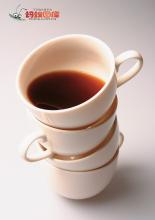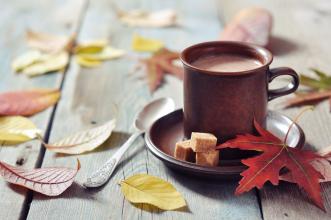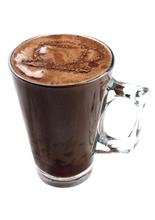Unique flavor of Jamaican Blue Mountain Coffee introduces St. Thomas producing area
By 1969, the situation had improved, as Japanese loans had improved the quality of production and thus secured the market. By now, the coffee has reached the point of being fanatically loved.
By 1981, about 1500 hectares of land in Jamaica had been cleared for coffee, followed by another 6000 hectares. In fact, today's Blue Mountain region is a small area of only 6000 hectares, and it is impossible that all the coffee labeled "Blue Mountain" is grown there. Another 12000 hectares are devoted to growing two other types of coffee: alpine premium coffee and Jamaica premium coffee.
Geography Editor
Blue Mountains of Jamaica
Blue Mountains of Jamaica
Blue Mountain Coffee is the world's premier coffee, and Jamaica's weather, geology and terrain combine to provide the ideal location. Ridges running through Jamaica extend to the east of the island, and the Blue Mountains rise to more than 2100 meters. The weather is cool, foggy and frequent, so use this rich soil to reconcile rain. Here, coffee trees are grown in a mixed cropping system, alongside banana and avocado trees on terraces. Some small farms are also planted. But even the region's largest planters are small-scale farmers by international standards, many of them smallholders whose families have been working for two centuries. The coffee industry in Jamaica faces a number of problems, such as the impact of hurricanes, increased labour costs and difficulties in mechanising terraces. Many small estates and farms are difficult to rationalize.
Since Japan has always invested in Jamaica coffee industry, Blue Mountain coffee is mostly controlled by the Japanese, and they have also obtained the right of first refusal to buy Blue Mountain coffee. In 1992, Jamaica sold 688 tons of Blue Mountain coffee to Japan, 75 tons to the United States and 59 tons to Britain. 90% of Blue Mountain coffee is purchased by Japanese. Since the rest of the world can only get 10% of Blue Mountain coffee, Blue Mountain coffee is always in short supply regardless of price.
Category Edit
Jamaica coffee has three varieties:
Blue Mountain Coffee
(Jamaica Blue Mountain Coffee), which is divided into four grades under Blue Mountain Coffee and Alpine Coffee. From the top to the bottom of the quality points are: NO.1, NO.2, NO.3 and PB, PB is round beans. According to CIB standards, only coffee grown above 666 meters above sea level is called Jamaica Blue Mountain Coffee;
Alpine coffee
(Jamaica High Mountain Supreme Coffee Beans) The coffee produced in the Blue Mountain region of Jamaica below 666 meters is called alpine coffee, which is also the coffee second only to Blue Mountain coffee quality. It is called the brother variety of Blue Mountain coffee by industry insiders. Jamaica Blue Mountain coffee produces very little caffeine, so if you want to taste Jamaica coffee, then Jamaica alpine coffee is your best choice.
Jamaica Coffee
(Jamaica Prime Coffee Beans)。Coffee grown outside the Blue Mountains is called Jamaica coffee. It turns out that Chinese coffee industry generally has a wrong understanding that only coffee planted in the Blue Mountain area above 1800 meters above sea level can be called Blue Mountain Coffee. In fact, there is only one manor on the mountain crown above 1800 meters in the Blue Mountain Mountains, Amber, which is descended from Chinese people. The manor's main surname is Lyn(Lin), whose ancestral home is Guangdong, China. The manor has only 30 hectares of land and its yield is very small. Blue Mountain coffee is mainly distributed in the Blue Mountain Mountains John Crow, St. John's Peak,Mossman's Peak,High Peak,Blue Mountian Peak and other five mountain areas.
unique flavor
Blue Mountain Coffee
Blue Mountain Coffee
From the above, we can understand the general production situation of Blue Mountain coffee. It should be noted that 99.9% of the Blue Mountain coffee that can be drunk in China is only planted near the Blue Mountain Range. Only the coffee produced in the 6000 hectares above 1600 meters above sea level can be called Blue Mountain, and the output has always been below 900 tons. According to the principle of 10% supply to the whole world outside Japan, Is this coffee, which the world consumes only 90 tons a year, something that can be drunk at any cafe for a few dozen yuan?

Important Notice :
前街咖啡 FrontStreet Coffee has moved to new addredd:
FrontStreet Coffee Address: 315,Donghua East Road,GuangZhou
Tel:020 38364473
- Prev

Introduction to the flavor and taste characteristics of Bali coffee Bali Kopi Luwak
1. The civet likes to eat the ripe red coffee fruit on the coffee tree; 2, pick out the undigested coffee seeds from the cat feces; 3, remove the silver gray film of the coffee seeds, wash them in the sun and dry them in the sun; 4, stir-fry the coffee beans. Kopi Luwak-Taste characteristic Taste forms Luwak after eating coffee beans, the protein in coffee beans is broken down, coffee beans
- Next

Introduction to San Cristobal Coffee producing area in Ecuador
Flavor: balanced acidity, aromatic fragrance recommended roasting methods: medium to deep roasting, can be made into high-quality mixed coffee, suitable for multi-use evaluation: general Ecuadorian giant turtle island coffee beans from the hometown of giant turtles coffee treasures the best Ecuadorian coffee is grown on St. Cristobal Island in the Galapagos Islands, where it has the best quality coffee in the world.
Related
- Detailed explanation of Jadeite planting Land in Panamanian Jadeite Manor introduction to the grading system of Jadeite competitive bidding, Red bid, Green bid and Rose Summer
- Story of Coffee planting in Brenka region of Costa Rica Stonehenge Manor anaerobic heavy honey treatment of flavor mouth
- What's on the barrel of Blue Mountain Coffee beans?
- Can American coffee also pull flowers? How to use hot American style to pull out a good-looking pattern?
- Can you make a cold extract with coffee beans? What is the right proportion for cold-extracted coffee formula?
- Indonesian PWN Gold Mandrine Coffee Origin Features Flavor How to Chong? Mandolin coffee is American.
- A brief introduction to the flavor characteristics of Brazilian yellow bourbon coffee beans
- What is the effect of different water quality on the flavor of cold-extracted coffee? What kind of water is best for brewing coffee?
- Why do you think of Rose Summer whenever you mention Panamanian coffee?
- Introduction to the characteristics of authentic blue mountain coffee bean producing areas? What is the CIB Coffee Authority in Jamaica?

